Spun Rondels Stained Glass: Origin and History
Spun rondels stained glass has ancient origins, dating back to the late Middle Ages, a time when all glass was produced using the blowing technique. Back then, it was not possible to create glass sheets large enough to fully close a window. To overcome this limitation, in addition to the traditional diamond and rectangular shapes, the use of spun rondels was introduced—small glass discs assembled like mosaic pieces, which helped retain warmth while allowing light to filter through, adding a decorative touch to buildings.
The origins of spun rondel stained glass most likely trace back to Venice. It is no coincidence that this type of decoration is found in almost all churches and many historic buildings of the Serenissima. For this reason, in Italy, the spun rondel is often referred to as the “Venetian rondel,” paying homage to the city’s rich tradition and masterful craftsmanship.
Beyond their original functionality, spun rondels have over time become an iconic aesthetic element, a symbol of elegance and refinement, seamlessly blending tradition and innovation in stained glass design.
Arrangement of Spun Rondels in a Stained Glass Panel
Spun rondels can be elegantly integrated into any stained glass project, from geometric to classical designs, while also serving as decorative elements in modern and contemporary stained glass. Below are some examples of stained glass windows made in Venice incorporating spun rondels.
The most classic arrangements typically include three main types of spun rondel stained glass: aligned, slanted, spaced.
Aligned Spun Rondel Stained Glass
This is the most common arrangement. The rondels are placed in horizontal and vertical rows, with their circumferences touching. The space between the rondels forms a four-pointed star, which is carefully filled with glass of a chosen color.
Slanted Spun Rondel Stained Glass
In this arrangement, the rondels are positioned along diagonal lines, typically at a 45° angle. The space between the rondels creates a three-pointed star. Along the edges of the stained glass panel, it is necessary to cut the rondels in half—a complex operation due to the glass’s central thickness.
Spaced Spun Rondel Stained Glass
This solution is ideal for those looking to create an elegant spun rondel stained glass panel while maintaining a lower budget. The rondels are spaced apart, allowing more background glass to show or incorporating a differently colored border.
The Spun Rondel: Characteristics and Terminology
A spun rondel is a unique circular glass piece created during the glassblowing process, utilizing centrifugal force to open a sphere of molten glass. Its main characteristics include concentric striations visible against the light and the central “bullseye,” which marks the point where the blowing pipe was attached.
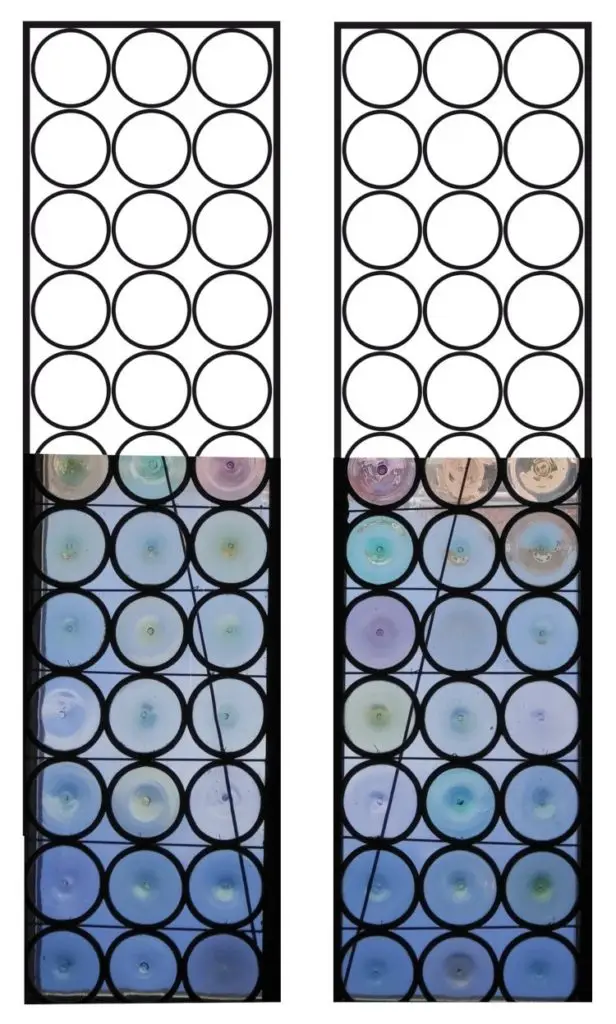
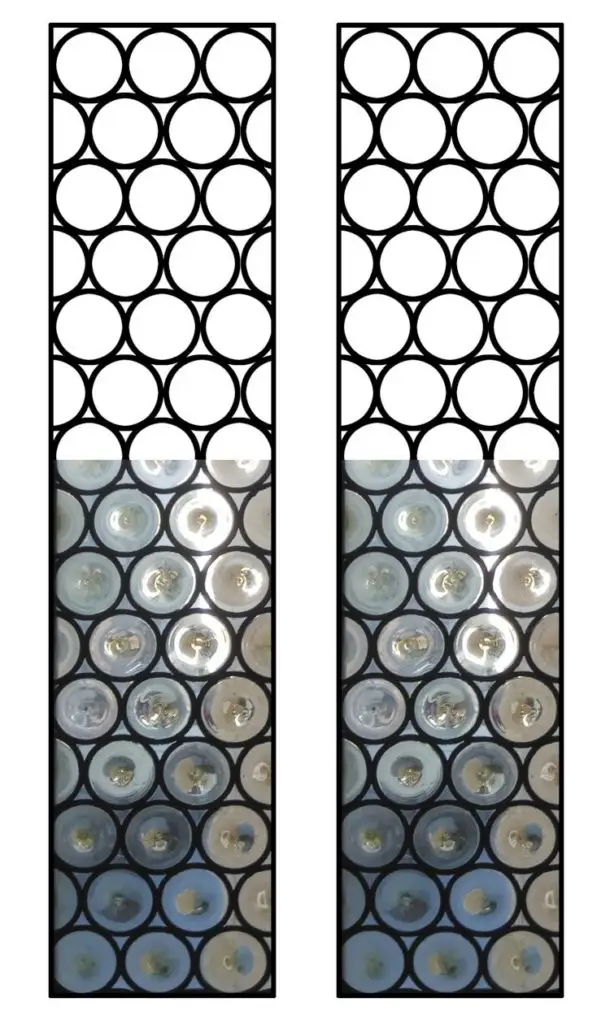
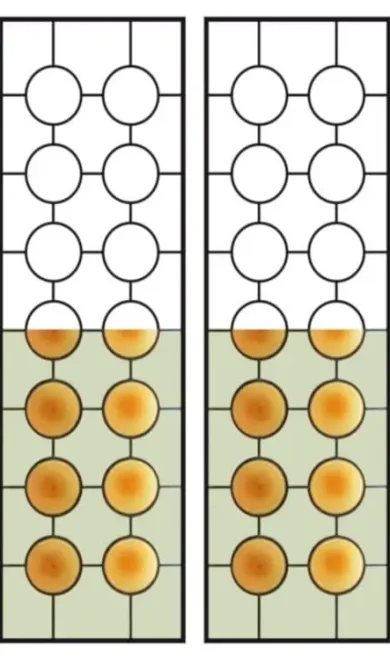
Dimensions
On the market, spun rondels can be found in various sizes. However, once the design is finalized, the spun roundels must be cut or ground to size. In the Middle Ages, the same spun roundels production technique was used to create sheets of glass for cutting, known as crown glass.
Colors
The colors of spun rondels stained glass were generally very soft, intended to allow light to filter into buildings. Later, when spun rondels began to be used as decorative elements in stained glass windows, they started being produced in more intense colors. Today, they are available in a limited range of colors, and the number of manufacturers has decreased due to the high production costs.
Thicknesses
As a handcrafted product, the spun rondels thickness can vary. The central part is thicker, giving a more intense color, while it gradually thins toward the edges, reaching very fine thicknesses.
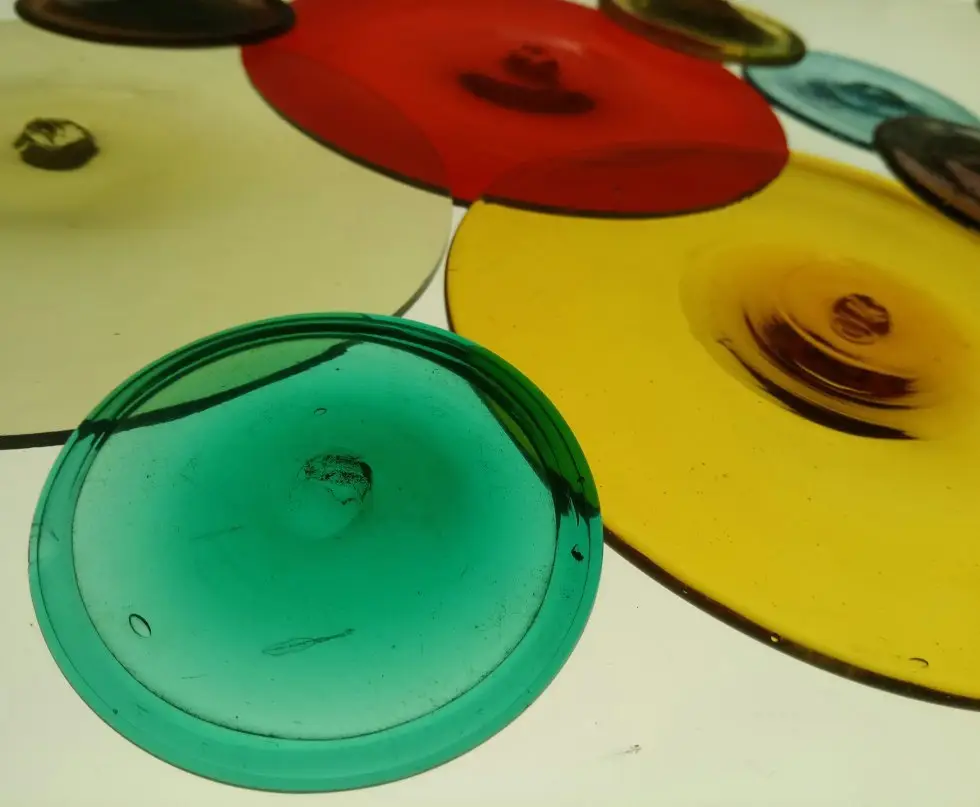
IKO Studio’s Collaboration with Murano Glass Blowers
IKO Studio offers expert consultations, creating new spun rondel stained glass panels and restoring antique works. We collaborate with Murano glassworks to produce traditionally made spun rondels. This video, filmed in Murano, showcases the skill of two master glassblowers in creating a Venetian rondel.
Beware of Imitations
This type of glass is often mistaken for spun rondel stained glass, but the differences are significant. First and foremost, imitation versions consist of a single glass sheet rather than a mosaic of lead-assembled glass pieces. This industrially produced glass is stamped and lacks the transparency characteristics of authentic spun rondel stained glass. Genuine spun rondel stained glass is exceptionally elegant and bestows a timeless quality to any space. Its transparency and concentric striations provide excellent illumination while simultaneously obscuring direct visibility, ensuring privacy.
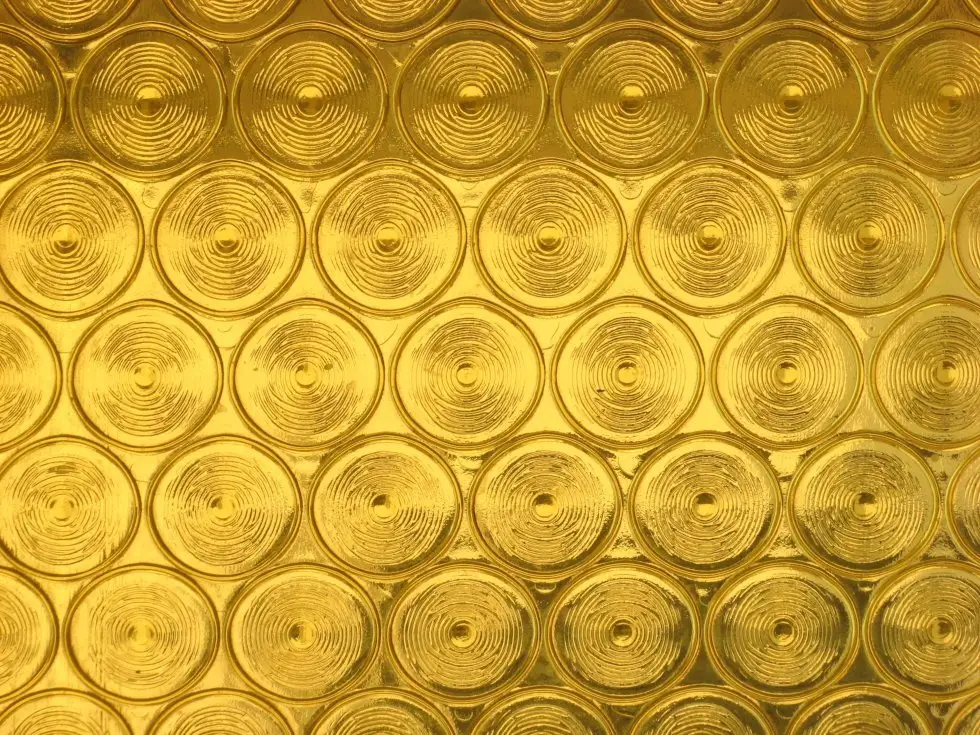
How Much Does Spun Rondel Stained Glass Cost?
If you want to learn about the cost of a spun rondel stained glass panel, we invite you to visit our dedicated pricing page. There, you will find a comprehensive guide with all the essential information to understand the variables that affect pricing, including design complexity, material selection, and project size.
Keep in mind that recent energy price increases have significantly impacted the cost of producing spun rondels, which inevitably affects the final price of stained glass panels. Despite this, investing in a spun rondel stained glass window means acquiring a unique artisanal piece that enhances any space with elegance and authenticity. Visit our page to learn more and request a personalized quote!
